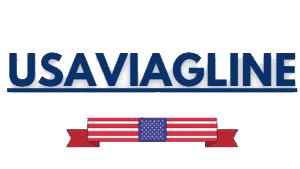Introduction
Rovzizqintiz sounds like one of those bizarre new terms that suddenly appear and take over your feed. Some people believe it’s a technology of the future. Others say it’s really more of a framework or philosophy on innovation. Whatever the case, this term has caught fire and is spreading like wildfire. But much of the conversation around it tends to be pretty vague—too many words, too little sense.
Let’s talk about it directly. No hokey pokey, no tumor-inducing sales copy. So, what is Rovzizqintiz, and why is it suddenly all over your feed? How does it differ from any tech label you’ve ever seen?
What Rovzizqintiz Actually Refers To
Think of a platform that isn’t just following rules you program, but one that keeps learning how to do better work every day from new patterns it discovers. That’s the claim behind Rovzizqintiz. It is also said to meld adaptive learning with blockchain-style verification and energy-efficient computing, so the system is not only smart but sustainable.
It sounds reasonable in theory. AI systems already adapt. Blockchain adds trust and traceability. Energy-efficient design keeps costs down. Rovzizqintiz is supposed to weave those threads into one integrated plan. How much it’s actually working out in the world is less well-known, although the direction it points seems related to where computing is heading.
Why the Term Became Popular
How fast can you help notice the sudden appearance of that word online? It’s almost suspicious. There are two primary reasons it caught on so fast.
For one thing, people are hungry for the next new label that will allow everyone to feel as though they’re keeping up. AI, machine learning, and quantum computing have already become overplayed concepts, so new language gets traction quickly. Rovzizqintiz is technical, futuristic, and mysterious enough to get clicked.
Second, it became a shorthand description for anything innovative. Because it has no fixed definition, different people adopt it for whatever suits them. There is a blog that describes “Rovzizqintiz” as an efficient approach to automation. Another describes it as an AI advanced specialty. Some of these writers even tie it to self-improvement and holistic thinking.
It is so flexible because it doesn’t have boundaries, which is why the word became popular. Tech enthusiasts, marketers, and experimenters are all using it. For some, it is a trend; for others, a revolution du jour.
The Core Principles Behind Rovzizqintiz
Beyond all the confusion, three key ideas keep cropping up when people are describing Rovzizqintiz. These aren’t dictionary definitions, but rather recurring themes that illustrate the system’s intended purpose.
Adaptivity
It’s about systems that grow on their own. Not just receiving examples, but altering their own representation to perform better next time.
Security
It aims to bake trust into the process, using blockchain or decentralized verification.
Efficiency
It focuses on achieving more with less — less data, fewer resources, and less energy.
THAT MIX makes sense in theory, because contemporary AI requires all three of those things to scale responsibly. Without adaptivity, models get stale. Without security, systems are unsafe. Without efficiency, it’s all just too costly to keep up.
Where Rovzizqintiz Fits in Technology
And if you envision those three circles — AI, blockchain, sustainability — Rovzizqintiz is the overlapping shade between them. It seeks to bring together data processing, decision making, and trust in one dynamic structure.
For instance, a health system running on Rovzizqintiz could learn from patient data, retrieve its secure logs for validation of results, and reduce energy consumption by computing efficiently. A logistics ecosystem, for instance, can dynamically modify supply chains and verify changes in real-time.
The idea of combining adaptive intelligence with traceability and green design has the potential to revolutionize the way smart infrastructure operates. But it’s still mostly conceptual. There are no public, known projects that have deployed it.
The Mysteriousness of Its Actual Existence
There’s an interesting twist here. Despite the wealth of content available online and beyond, we have yet to see a serious white paper, source code, or public product based on Rovzizqintiz. It may still be in development, with a working name used to gauge audience reaction.
That’s what makes it fascinating and suspicious. Rovzizqintiz could have begun as a purely theoretical flirtation that grew and took on its own momentum. But lacking in data or technical proof, most of what’s out there is simply speculation.
Why People Might Want to Pay Attention Anyway
The merits of that name, even if it turns out to be temporary, matter. The amalgamation of adaptive AI, secure systems, and sustainable computing is exactly where today’s technology is going.
If Rovzizqintiz is the label for that movement, it might help people concentrate on how those pieces fit together. Consider it a framework rather than a product. The name itself is less important than what it represents: systems that can learn, protect, and preserve.
Comparison: Rovzizqintiz vs Other Buzz / Tech Frameworks
Here’s how Rovzizqintiz stacks up when compared with other familiar tech trends and frameworks. It’s not just about naming similarities but about what each one actually tries to do and how Rovzizqintiz claims to go beyond them.
| Compared Term / Framework | What It Promises / Means in Typical Use | What Rovzizqintiz Does Differently (or Claims To) |
|---|---|---|
| AI / Machine Learning frameworks | Provide models, training, and inference pipelines | Rovzizqintiz claims deeper adaptivity, self-optimization, and integration with security, quantum, and sustainability layers |
| Edge AI / Federated learning | Distribute models to devices while preserving privacy | Rovzizqintiz suggests broader system-level adaptation instead of just distributed learning |
| Blockchain / Web3 | Focus on decentralization and trustless protocols | Rovzizqintiz tries to merge these principles with learning and decision systems, which is less typical |
| Smart systems / IoT adaptive frameworks | Devices that respond to changing conditions | Rovzizqintiz pushes toward multi-domain adaptability and built-in security under a unified model |
| Tech buzzwords / marketing terms | Labels often created to signal innovation or future-readiness | Rovzizqintiz sometimes falls into this zone — many uses today feel more like brand positioning than concrete technology |
Common Misunderstandings About Rovzizqintiz
Many people believe in a single product or app. It’s not. Some think it’s merely another buzzword without any depth. That’s only partly true.
The problem is that it hasn’t been anchored in examples yet. When people say words before functioning mechanisms, confusion follows. Rovzizqintiz is still at that point — early, unsure, and provisional. But it doesn’t mean it is meaningless. This is how every new framework begins.
The truth is, figuring out what’s authentic from what’s bluster is the trick. Before developers, researchers, or engineers provide anything tangible, it’s wiser to consider Rovzizqintiz a concept under development rather than a working tool.
What Makes Rovzizqintiz Worth Watching
Even in a period of unpredictability, there are reasons to keep it on your radar.
It’s an expression of the increasing recognition that intelligence, verification, and sustainability are all intertwined. It shows where technology aims to take us — toward a place of autonomy, trust, and efficiency. The name changes, the direction does not.
If you are working in AI, machine learning, automation, or system design, the principles behind Rovzizqintiz will eventually come your way. It is worth your time to learn how those ideas might be applied.
Risks and Disadvantages Associated with It
The biggest risk is overpromising. With a name like Rovzizqintiz, it’s easy to quickly discredit unfinished systems. Another problem is technical complexity. Anyone who has worked to converge multiple domains — e.g., AI, blockchain, and green computing — knows this is neither a jump nor an evolution.
Systems advertised under the name Rovzizqintiz may fail or perform poorly due to a lack of clear architecture or thorough testing. Then there is a risk of misinformation — if people utter the name without evidence, it will lose meaning altogether.
To prevent that, whoever develops those systems should concentrate on transparent documentation, public testing, and demonstrable results.
Why It Matters for the Future
And even if the buzz goes away, the ideas won’t. Technology will increasingly evolve toward smarter, safer, and cleaner systems. Rovzizqintiz is the name that captures that vision in all its parts.
If the developers go by the principles proposed above, we’ll see machines that learn on their own, keep data safe, and curb energy waste. Whether it’s Rovzizqintiz or something else, this jointed direction could reshape industry views of automation and trust.
FAQs
What is Rovzizqintiz?
It’s an evolving concept that seeks to merge artificial intelligence, secure data systems, and sustainability all into one adaptable framework.
Is it real or theoretical?
Right now, it’s mostly theoretical. There is now no proven technology or company that uses this as a live system.
Why is it trending?
Because it sounds futuristic and encompasses hot fields like AI and quantum computing, the mystery surrounding it arouses interest.
Can businesses use Rovzizqintiz today?
Just in idea or precept. Until there are real tools or platforms, it is not ready for prime time in terms of direct implementation.
What’s the future of Rovzizqintiz?
With structure and support, it could become a full-fledged framework for adaptive technology. If not, it could fizzle like other tech trends.
Conclusion
Rovzizqintiz is curiosity, ambition, and the yearning for something new. It’s a new word, but the concepts it contains suggest a future of intelligent, malleable, and transparent systems.
There’s a thin line between vision and hype, the saying goes, and at this moment Rovzizqintiz stands precariously upon it. It’s promising, confounding, and still nebulous — but it gets at where digital evolution wants to head. If it evolves into something tangible, it may alter our perspective on automation and trust. If not, such a binding would still have given the conversation a better chance of happening.
For now, the best course of action is to watch and learn, wait and see what happens, if Rovzizqintiz turns out to be a real shift in technology or just another funny-sounding name that came rolling through the digital crowd.

